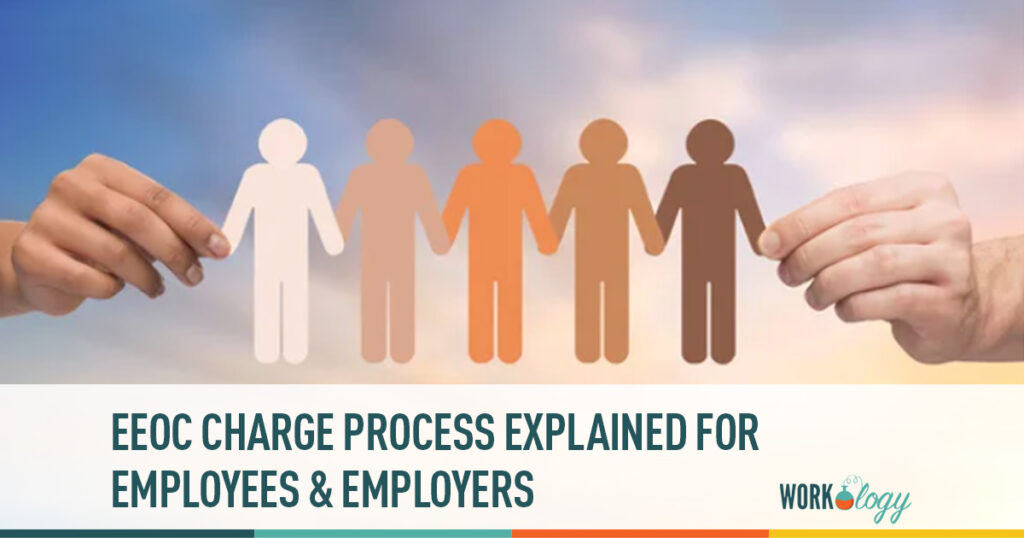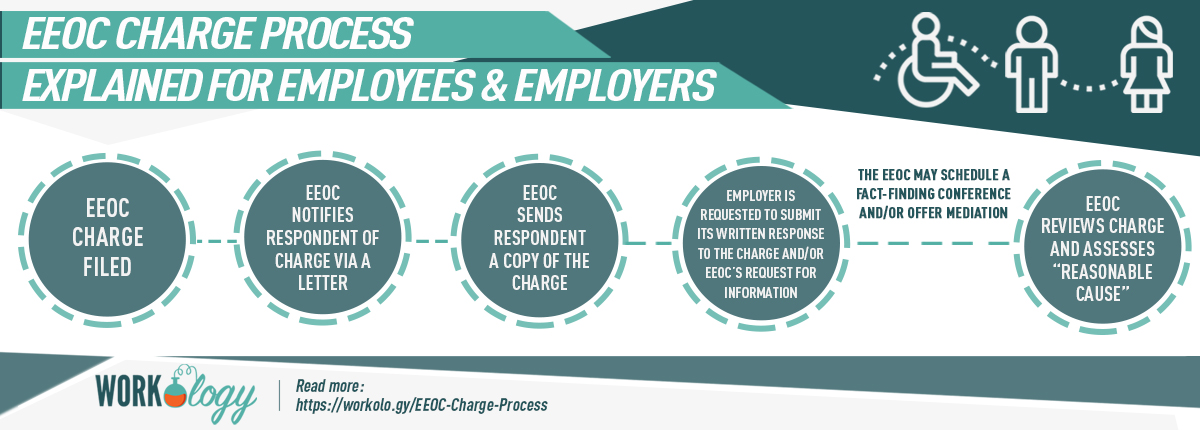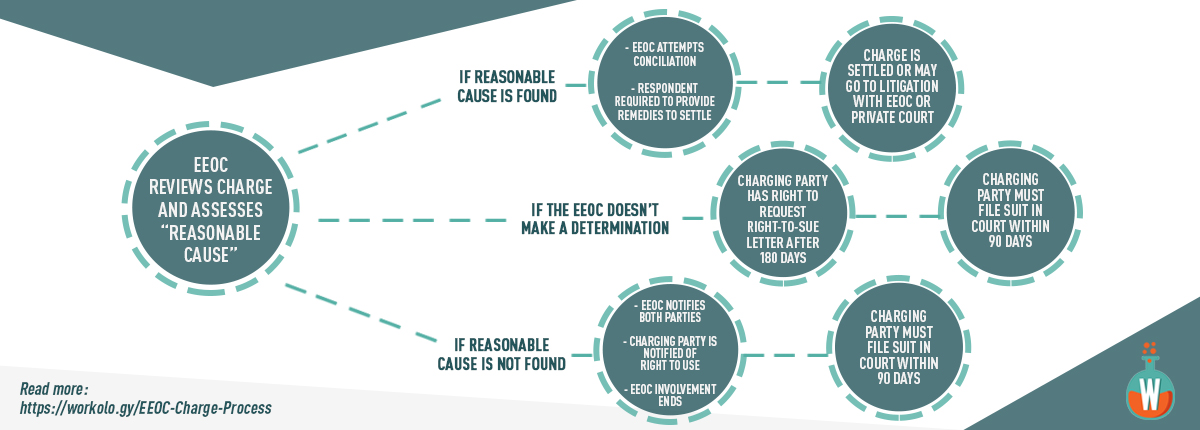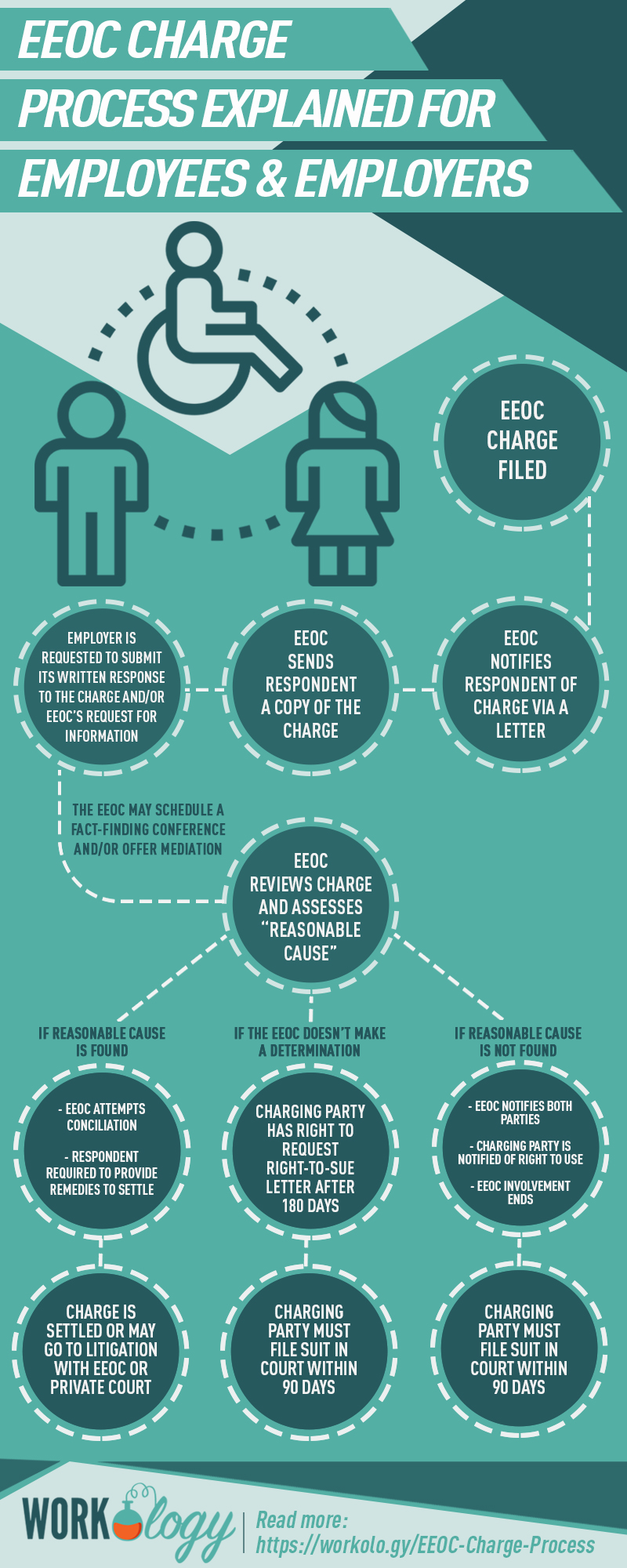As an HR leader or manager, we’ve likely all had a situation or scenario where an employee or candidate entered our office, left a voicemail or email ending the conversation with, “You will be talking to my lawyer. This is discrimination.”
And sometimes it is discrimination and sometimes it is not. What most employees and candidates as well as business leaders fail to understand is the EEOC charge process that happens in order for the EEOC to conduct a formal discrimination investigation.
I remember the first time I received an EEOC charge letter in the mail. It was a white envelope from the EEOC. I had read about the letter in my HR certification prep classes, but until I was four years into my HR career, I hadn’t actually being on the receiving end of one of these things. I sweated bullets as I opened that letter and remained anxiety ridden throughout the process. And after two charge letters I became more comfortable with all the steps that were involved when it came to the EEOC. Once I become more familiar I became less stressed, however, it was communicating and explaining the EEOC charge process to my leadership team that was really a stretch.
The flow chart infographic you see below is a reiteration of many different hand drawn flow charts I have made over the years generally with dry erase marker on white boards or large sticky notes in too many manager meetings to count. As HR leaders we are often pseudo attorneys to our friends and family members, and I have also realized how little employees and job seeker understand when it comes to the EEOC.
In this article, I’m going to explain the EEOC charge process as I have found that managers are often confused of what a charge letter is and the series of steps and those filing or threatening they are filing a EEOC charge are unfamiliar about what is involved and what this really means.
Employee or Candidate Files Charge of Discrimination with EEOC
The first step to filing a charge of discrimination is visit the EEOC website and file a charge through their online web portal. Individuals who are filing a charge of discrimination are doing so because they have been discriminated against at work because of their race, color, religion, sex (including pregnancy, gender identity, and sexual orientation), national origin, age (40 or older), disability or genetic information. These are called protected classes as outlined by the Title VII of the Civil Rights Act. The EEOC is a government entity that is responsible for enforcing federal laws that make it illegal to discriminate against a job applicant or an employee.
The employer is notified of the charge discrimination in the form of a letter letting the company know of the charge and the pending investigation. In some cases, the EEOC will contact the employer and request more information as well as documentation throughout the investigation. The charge letter doesn’t do anything but tell both parties that an investigation is beginning.
In 2020, the EEOC reported there were 67,448 charges of discrimination filed. This is 5,227 fewer charges of discrimination than were in FY 2019. Over the past four years, there has been a significant number of decreases of charges year after year. You might find that surprising especially since it seems like the news is bombarded with employer offenses and work drama every single day. It’s important to note that every newsworthy media article or story isn’t being investigated by the EEOC. There are a whole host of government agencies beyond the EEOC that investigate employer violations including OSHA, the OFCCP and the U.S. Department of Labor’s Wage and Hour Division.
EEOC’s number of charges have also decreased because the monetary recovery for discrimination has decreased along with the EEOC’s strong focus in mediation. Filing a charge isn’t a way to stick it to the man. While some businesses will be fined and forced to pay, the EEOC focuses on reaching a mutual resolution that woks for both parties.
How Long Does the EEOC Investigation Process Take?
The length of the investigation process varies depending on how much data and fact finding by the EEOC agent needs to be gathered and how quickly the employer is at providing information and resources along with a written response to the charge. The EEOC reports the individual who filed the charge must allow the EEOC 180 days to resolve your charge. It is common for the employee to remain working or employed with the organization throughout the investigation. One charge a past employer received, the individual who fired a charge for discrimination was interviewing for a promotion when I received the charge letter. They were the most qualified for the job and during the investigation were promoted to a manager role. Their charge was about the removal of several high profile client accounts from their territory. The employee believed these clients were removed from their responsibility because of her race and file a discrimination charge with the EEOC.
Three Outcomes From an EEOC Charge Investigation
The EEOC will complete their investigation and one of three outcomes will occur.
Scenario 1 – Reasonable Cause of Discrimination Is Found
The EEOC will attempt conciliation between the company and the charging party. This is normally in the form of mediation, private court, or litigation with the EEOC. The EEOC has focused much of their efforts on meditation in the recent past starting a new program in June of 2020.
Scenario 2 – EEOC Doesn’t Make a Determination
The charging party receives right-to-sue letter. The charging party must file a lawsuit within 90 days. The individual will seek council and file a lawsuit against the employer. The EEOC could not fully determine if discrimination occurred.
Scenario 3 – Reasonable Cause of Discrimination is Not Found
EEOC ends involvement with no responsible cause the discrimination found. The charging party can still file a lawsuit within 90 days. The individual will seek council and file a lawsuit against the employer. The EEOC could not find evidence of discrimination over the course of their investigation.
Charging Parties Decision To File Suit or Not to File Suit
One scenario that I have seen with success for charging parties is to use the 180 day to their advantage with the goal of settlement outside of the EEOC. Often individuals will hire an attorney normally who agrees to take them on with the promise of a percentage of the settlement award for their efforts. The attorney’s vetting process is very detailed. I friend of mine did this with success and she met with several attorneys before she found one who would best represent her. She was mysteriously fired for her performance just after receiving glowing reviews and two days after her health benefit selection deadline. Her husband had a heart condition and a host of expensive health conditions totaling more than a $1 million in healthcare costs in the last year. She had pretty damning evidence including audio recordings and an email trail along with a floral arrangement that sent the week before with a note from the CEO giving her a glowing performance review for her first 90 days.
After my friend filed her EEOC charge and went through the process, she received a year of salary for the settlement. However, the attorney took 30% in exchange for their work developing and submitting multiple demand letters, investigative work, and the collection of all the charge’s documentation all while the EEOC investigation was taking place.
During my HR career, I have worked for a large number of companies giving me insights into how complex the litigation process actually is. The case I dealt with stemmed from not one but 20 EEOC charges for a specific store location. Due to the number of charges, the charging parties joined forces and filed a class action lawsuit against the employer where employees within a large metro area were allowed to join in. I worked directly with the corporate legal team during the discovery process of the lawsuit since this store location was transferred into my responsibility. We spent thousands of hours reviewing thousands of employee files, conducting interviews and reviewing attendance logs and performance reviews. While I won’t comment on the outcome, I will suggest that employers should conduct thorough manager training for all leaders regardless of level along with having a solid employee grievance and investigation process in place. The store location where these EEOC charges stemmed was closed and thousands of employee lives were impacted. The EEOC is there to protect against discrimination and for that I am very grateful.










